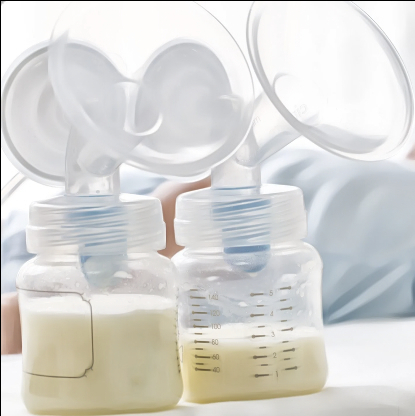
Breast Milk Color Change
Share
If your baby is getting all of their milk directly from your breast, there’s a chance you’ll never see your milk, other than the occasional leak or spraying letdown. However, if or when you start pumping, you will probably notice that your breast milk color changes—often! Typically, variations in breast milk color are no cause for alarm, but it can help to know what you’re seeing.
White
Accustomed to seeing gallons of cow’s milk in the grocery store or our own refrigerators, white is often the color we associate with milk, and many human mothers will make milk that appears white and creamy. However, because the composition of breast milk changes from feed to feed, and even within a breastfeeding or pumping session, off-white and other colors can be normal as well.
Clear (or Blue)
Sometimes when breast milk has slightly less fat content, it appears clear or blue-ish. Often called “foremilk” and “hindmilk,” it’s important to note that the breast only makes one type of milk, and that the difference between milk at the beginning of a session and the end of a session is only in the amount of fat being pulled from the walls of the alveoli as your baby (or pump) sucks and feeds. Milk that is clear or blue in appearance is generally nothing to worry about.
Yellow (or Gold)
If your milk is yellow or gold, it can be for a few reasons. Perhaps you just gave birth and your body is still making the initial milk, colostrum. Lots of yellow or orange food, like carrots or sweet potatoes, in a mother’s diet can also cause milk to have a yellow or gold color. Freezing your milk can also cause it to take on a yellow color. This doesn’t mean anything is wrong, you can follow safe milk thawing guidelines and give that golden milk to your baby.
Green
If your milk remains the same in texture, but takes on a green tint, it’s likely due to your diet and just indicates that you’ve been eating lots of leafy greens or other green foods. If you notice what seems more like a sticky green-ish discharge than milk, you can consult with your care provider to check for signs of infection.
Pink (or Red, also sometimes described as Rust)
Pink, red, or rust colored milk likely means there is some blood in your milk. It’s generally safe to give your baby this milk, even though it looks rather alarming to see pink or red milk when you’re expecting something white or creamy. This blood is probably due to nipple damage, and it can be worth checking to be sure that your pump flanges are the right size (most pump companies, like Spectra or Medela, offer size guides on their websites) and getting support from a lactation consultant if your nipples are cracked or bleeding after feeding your baby.
Black (or Brown)
Occasionally, your milk may be dark in color and appear either black or brown. This can also be caused by blood in your milk, and like pink or red milk, is safe to give your baby. Black or brown milk can also be caused by food or medications. If you want to know if a medication is safe for breastfeeding, InfantRisk is a helpful resource.


